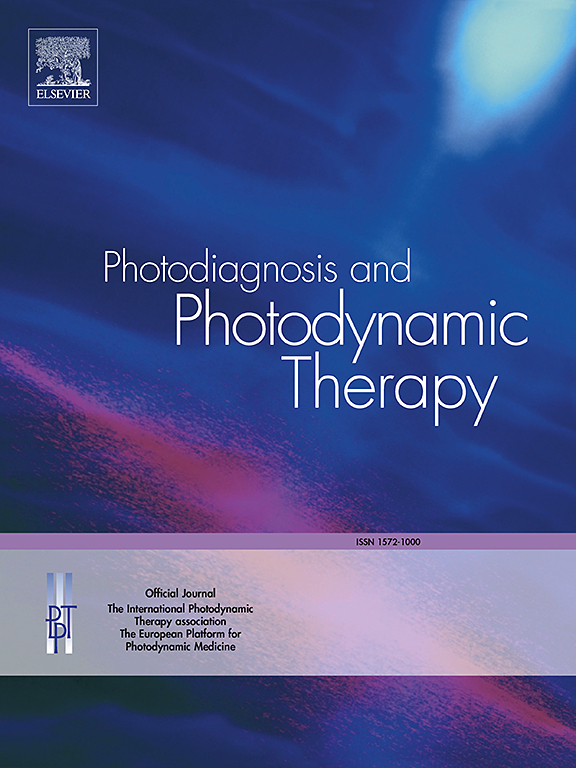Topical 5-aminolevulinic acid photodynamic therapy for actinic keratosis increases skin elasticity and hydration
IF 2.6
3区 医学
Q2 ONCOLOGY
引用次数: 0
Abstract
Introduction
Photodynamic therapy (PDT) is a field-directed strategy to manage multiple actinic keratosis (AK) lesions. During the course of PDT, AK has been found to regress; meantime, lentigines, roughness, and fine lines advance on the photoaged skin. In this study, we adopted a noninvasive biophysical platform MPA580 to analyze skin indices of aging, including elasticity, hydration, sebum, transepidermal water loss (TEWL), melanin, erythema, and pH value. We aimed to provide additional quantitative evidence showing that PDT, used in a standard therapeutic regimen that is known to ameliorate AK, can also have significant anti-photoaging effects in a population of older adults with type III-IV skin.
Materials and methods
Eighteen volunteers, 12 males and 6 females, mean age 74 years, histopathologically diagnosed with AK were included. Two sessions of PDT were conducted with a 4-week interval. The photosensitizer, 10 % aminolevulinic acid (Ameluz®) was applied to the whole face with occlusion for 2 h, and the whole face was irradiated with a 630-nm light source for 26 min at a mean light dose of 78 J/cm2. Skin biophysical assessments were sequentially performed at four time points. The first was 1 day before the first PDT, the second was 4 weeks after the baseline, the third was 8 weeks after the baseline, and the 4th was 12 weeks after the baseline.
Results
Cheek elasticity significantly improved at weeks 4th and 8th (p = 0.006 and 0.002, respectively). Cheek hydration significantly increased at the 4th week (p = 0.018). No significant changes were observed in terms of cheek TEWL, melanin, erythema, sebum and pH values, and all parameters on the forehead and nose tip.
Discussion
Topical PDT improves skin hydration and elasticity. It is a promising strategy for photorejuvenation for people aged >70 years. Future studies using large cohorts and long follow-up duration should be conducted to validate our results.
局部5-氨基乙酰丙酸光动力治疗光化性角化病增加皮肤弹性和水合作用。
光动力疗法(PDT)是一种现场定向策略,用于管理多发性光化性角化病(AK)病变。在PDT过程中,AK出现了退化;同时,小痣、粗糙和细纹在光老化的皮肤上发展。在本研究中,我们采用无创生物物理平台MPA580分析皮肤老化指标,包括弹性、水合、皮脂、经皮失水(TEWL)、黑色素、红斑、pH值。我们的目的是提供额外的定量证据,表明PDT,用于已知改善AK的标准治疗方案,也可以在III-IV型皮肤的老年人人群中具有显着的抗光老化作用。材料与方法:纳入18名志愿者,男12名,女6名,平均年龄74岁,经组织病理学诊断为AK。两次PDT治疗间隔4周。将光敏剂10%氨基乙酰丙酸(Ameluz®)在遮挡下全脸照射2小时,用630 nm光源照射全脸26分钟,平均光剂量为78 J/cm2。在四个时间点依次进行皮肤生物物理评估。第一次为第一次PDT前1天,第二次为基线后4周,第三次为基线后8周,第4次为基线后12周。结果:第4周、第8周患者脸颊弹性明显改善(p=0.006、0.002)。第4周时,脸颊水分含量显著增加(p=0.018)。脸颊TEWL、黑色素、红斑、皮脂和pH值以及额头和鼻尖的所有参数均无明显变化。讨论:局部PDT改善皮肤水合和弹性。它是一种很有前途的光嫩策略,适用于70岁以上的老年人。未来的研究应该使用大的队列和较长的随访时间来验证我们的结果。
本文章由计算机程序翻译,如有差异,请以英文原文为准。
求助全文
约1分钟内获得全文
求助全文
来源期刊

Photodiagnosis and Photodynamic Therapy
ONCOLOGY-
CiteScore
5.80
自引率
24.20%
发文量
509
审稿时长
50 days
期刊介绍:
Photodiagnosis and Photodynamic Therapy is an international journal for the dissemination of scientific knowledge and clinical developments of Photodiagnosis and Photodynamic Therapy in all medical specialties. The journal publishes original articles, review articles, case presentations, "how-to-do-it" articles, Letters to the Editor, short communications and relevant images with short descriptions. All submitted material is subject to a strict peer-review process.
 求助内容:
求助内容: 应助结果提醒方式:
应助结果提醒方式:


